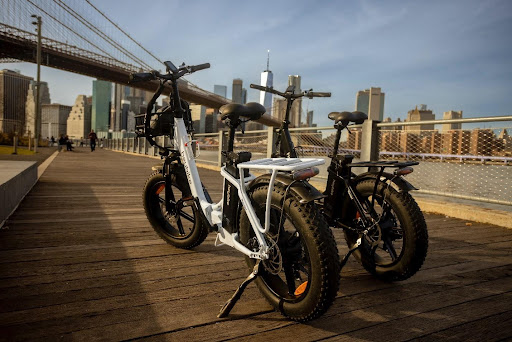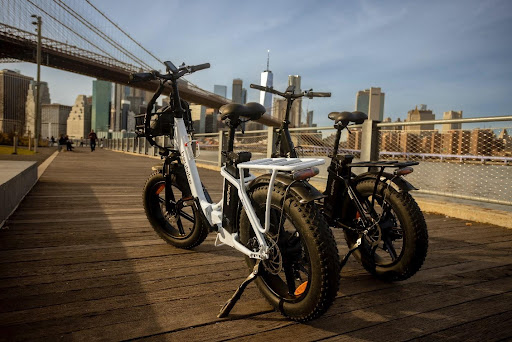
In recent years, electric bicycles, commonly known as e-bikes, have surged in popularity, offering the appeal of traditional biking but with an added electric boost. With this rise in demand, the market has become saturated with various models, each boasting unique features and capabilities. Understanding the key features of e-bikes is crucial to making an informed purchase that aligns with your lifestyle and riding preferences. This article aims to guide you through the essential features to consider when choosing the perfect e-bike for your needs.
Battery Life and Range
The heart of an e-bike is its battery, as it dictates how far you can ride on a single charge. Battery life and range are influenced by factors such as battery capacity, the terrain you’re riding on, and your riding style. Higher-capacity batteries offer longer ranges but can also increase the bike’s weight and cost. Look for a battery that provides a balance between range and practicality.
Motor Power and Performance
The motor of an e-bike significantly influences its overall performance. Motor power, measured in watts, determines how much assistance the bike can provide. A higher wattage motor offers more power, ideal for climbing hills or carrying heavy loads, but it can also drain the battery faster. Conversely, a lower wattage motor is more energy-efficient but may struggle on steeper inclines. Consider your typical riding scenarios – such as commuting in a city or tackling hilly terrains – to choose a motor that meets your performance needs without compromising battery life.
Understanding E-Bike Brakes
Brakes are a critical safety component of any bicycle, and e-bikes are no exception. When it comes to e-bike brakes, the main debate is often of disk brakes vs rim brakes. Disk brakes, which apply braking force to a rotor attached to the wheel hub, are known for their consistent performance in various weather conditions, including wet and muddy environments. They offer superior stopping power and are less prone to overheating on long descents. On the other hand, rim brakes apply force directly to the wheel rim and are typically lighter and more straightforward to maintain. However, their effectiveness can diminish in wet conditions, and they may wear out the wheel rim over time. When choosing an e-bike, consider your typical riding conditions and prioritize brake types accordingly.
Frame Material and Design
The material and design of an e-bike’s frame affect its weight, durability, and ride quality. Aluminum frames are common due to their balance of strength, lightness, and cost-effectiveness. Carbon fiber, while more expensive, offers a superior strength-to-weight ratio and a smoother ride but is less resilient to impacts. Steel frames are known for their durability and comfort but are heavier, which can be a drawback for an e-bike. Additionally, the design of the frame influences the bike’s ergonomics and handling. Look for a frame that suits your body type and riding style, ensuring a comfortable and enjoyable ride.
Comfort and Ergonomics
Comfort is key in any bike, and e-bikes are no exception. A comfortable ride reduces fatigue and enhances the overall experience. Key ergonomic features to consider include adjustable seats and handlebars, which allow you to tailor the bike to your body. The saddle’s quality, the grip design on the handlebars, and the suspension system also contribute to the bike’s comfort. Some e-bikes offer additional comfort features like step-through frames, which make mounting and dismounting easier, especially in urban environments or for riders with limited mobility. Prioritize these elements to ensure your e-bike rides are as comfortable as they are efficient.
Weight and Portability
The weight of an e-bike is a crucial factor, especially if you need to transport it frequently. Heavier bikes offer stability and durability but can be challenging to carry upstairs or load into a vehicle. Lighter models are more manageable in these scenarios but may compromise on battery size or frame strength. Portability is also influenced by the bike’s design features, such as foldable frames or detachable batteries, which can make transportation and storage more convenient. When selecting an e-bike, consider your daily routine and how often you’ll need to move it without riding. Balancing weight and portability with your needs will ensure a practical e-bike experience.
Safety Features
Safety should never be overlooked when choosing an e-bike. Essential safety features include robust lights for visibility, reflective elements for night riding, and a reliable horn or bell. These features are vital, especially in urban settings or low-light conditions. Additionally, consider the braking system’s responsiveness, as e-bikes typically travel faster than conventional bikes. Some e-bikes also come with advanced safety options like integrated locks, GPS tracking for theft prevention, and even automatic emergency call systems in case of an accident. Ensuring your e-bike is equipped with these safety features will provide peace of mind and a secure riding experience.
Price and Warranty
The cost of an e-bike can vary significantly based on its features, quality, and brand. While it’s tempting to opt for a cheaper model, it’s important to consider the long-term value. A higher-priced e-bike often comes with better quality components, more robust construction, and advanced features. Additionally, the warranty is a crucial aspect of your purchase. A comprehensive warranty can cover potential issues with the battery, motor, and other components, safeguarding your investment. When evaluating the price, balance it against the bike’s features, expected lifespan, and the warranty coverage to ensure you’re getting the best value for your money.
Smart Features and Connectivity
Modern e-bikes often come equipped with smart features that enhance your riding experience. These can include GPS navigation, fitness tracking, and integration with smartphone apps. Such features allow you to plan routes, track your fitness goals, and even control certain aspects of the bike, like assistance level or lights, through your phone. Some models offer connectivity features like Bluetooth speakers, USB charging ports, and theft alerts. While not essential for everyone, these smart features can add significant value and convenience for tech-savvy riders or those using their e-bike for fitness and leisure.
Making an Informed Choice
Purchasing an e-bike is an investment in both your transportation and lifestyle. It’s essential to consider the various features that can impact your riding experience. From the type of brakes to the bike’s weight and portability, each aspect plays a role in how well the e-bike suits your needs. As e-bikes continue to evolve, staying informed about these features will help you make a decision that best fits your lifestyle. Whether you’re using your e-bike for daily commuting, recreational rides, or fitness, the right choice will provide a seamless, enjoyable, and efficient riding experience.
